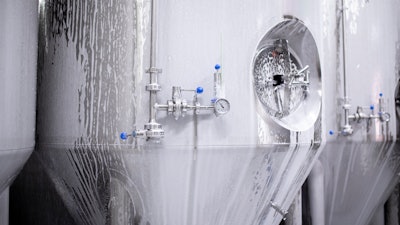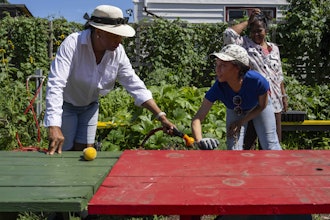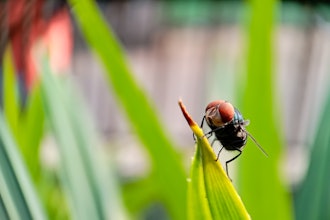
NORWICH, England — Scientists from the Quadram Institute and U.K. Health Security Agency have discovered that bacterial populations remain stable on factory floor despite cleaning efforts in ready-to-eat food production facilities.
In 2019, six people died from a listeria outbreak caused by contaminated ready-to-eat foods served in a number of hospitals across the U.K. In light of this, scientists are now performing vital research which helps to understand how these pathogens can persist in ready-to-eat food preparation environments.
Listeria monocytogenes is a foodborne bacterium that causes an illness called listeriosis. Symptoms for healthy individuals include a high temperature, aches and pains, feeling or being sick; but infection in those who are pregnant, elderly or immunocompromised, can lead to death.
The safety of foods is therefore paramount within the food industry. However, even in the face of well-implemented strategies to disinfect facilities and control for microbial risks, microbes such as listeria can occasionally breach food safety barriers and cross-contaminate food products. This is particularly dangerous in ready-to-eat foods where consumers will not kill contaminating bacteria by heating the food before eating it. Despite this danger, very little research has been done to understand the bacteria in ready-to-eat food production environments.
Researchers wanted to understand the potential sources of cross contamination and the factors that contribute to the survival of L. monocytogenes in these environments, particularly the communities of other microbes that support and protect it.
They began by sampling the floor of a ready-to-eat food factory that had recurrently detected L. monocytogenes in specific non-food contact areas of the factory. They sampled different sites: a preparation area, where ingredients were kept at 4°C, and a production area where they assembled and packaged the food, kept at 10°C. They aimed to measure the changes of bacterial communities over time, so they sampled the sites over ten weeks, before and after cleaning. They then cultured and performed genetic analysis on the samples to identify which bacteria were present and in what proportions.
The results showed that the populations of bacteria that coexist with L. monocytogenes were stable over time and have adapted to the conditions on the factory floor, including food safety controls. As Maria Diaz from the Quadram Institute and lead of the study explains, “As L. monocytogenes is supported by a stable community of other bacteria, we may now need to develop new strategies to alter the whole bacterial population to effectively eliminate the pathogen.”
While the overall bacterial populations, and proportions of bacteria were stable before and after cleaning, Diaz explains that we cannot assume cleaning efforts do not work.
“The populations are very stable, and cleaning is not shifting the composition – it’s not letting one bacterium grow over another. After cleaning, the bacteria reduce in numbers and the bacterial load is lower, making cross contamination less likely.”
There was a marked difference, however, between the different areas of the factory at different temperatures; suggesting that the bacterial populations are highly adapted to the different environments within the factory. It also suggests that the bacteria present in the factory are established populations rather than bacteria introduced from outside sources – as despite movement of personnel between them, the populations remained stable.
While the factory had listeria under control at the time of sampling, this new research is important for understanding the different communities of microbes in different environments across ready-to eat-food facilities. Researchers hope that understanding how listeria survives in these environments could inform more accurate laboratory testing of cleaning methods. Diaz adds, “thanks to this research, we can better understand the lifestyle of this pathogen and start to develop laboratory models that allow us to investigate new ways of killing listeria.”






















